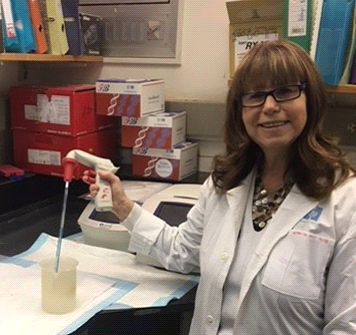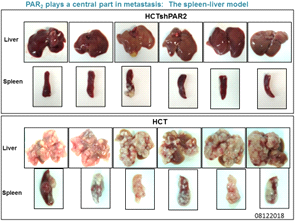Lab Research Focus
OncoGPCRs: Cancer molecular mechanism and translational means
G-protein  coupled receptors; GPCRs are the largest receptors family in mammalian cells, mediating a plethora of physiological responses. Despite the fact that GPCRs emerge as oncogenes that regulate cancer-associated signaling networks, their role in tumor biology is not well understood. It is imperative to determine which of the GPCRs are cancer instigators rather than bystanders in order to identify effective gene targets. We are studying the involvement of protease-activated receptors; PARs, a subgroup of GPCRs in tumor biology.
coupled receptors; GPCRs are the largest receptors family in mammalian cells, mediating a plethora of physiological responses. Despite the fact that GPCRs emerge as oncogenes that regulate cancer-associated signaling networks, their role in tumor biology is not well understood. It is imperative to determine which of the GPCRs are cancer instigators rather than bystanders in order to identify effective gene targets. We are studying the involvement of protease-activated receptors; PARs, a subgroup of GPCRs in tumor biology.
Recently, we have established critical target sites for future cancer therapy modalities. These are mediated via pleckstrin homology (PH) binding motif within PAR1, and PAR2 (Kancharla et al., Nature Communications, 2015). Currently, we aim to identify PH-domain binding motif within an array of GPCRs.
At the molecular level we study PAR induced β-catenin stabilization pathway, a core signaling pathway in both cancer and development. We have determined a specific PAR induced gene signature in tumor biology. Currently we study cancer stem cell niche components and identified new partners. 
PARs in development. We began studying in collaboration with Dr. Adi Inbal (Dept of Medical Neurobiology, Faculty of medicine, Hebrew University, Jerusalem) developmental aspects of PARs in the zebrafish model. A phenotype of developmental pathologic alterations in the dorsal cells and shortened trunk axis twisted a bit were observed when zPar2 was injected to overexpress in the embryos of zebrafish. Pointing to the significance of Par2 gene in developmental cues. In-contrast no modifications were observed in the presence of a truncated zbPar2.

